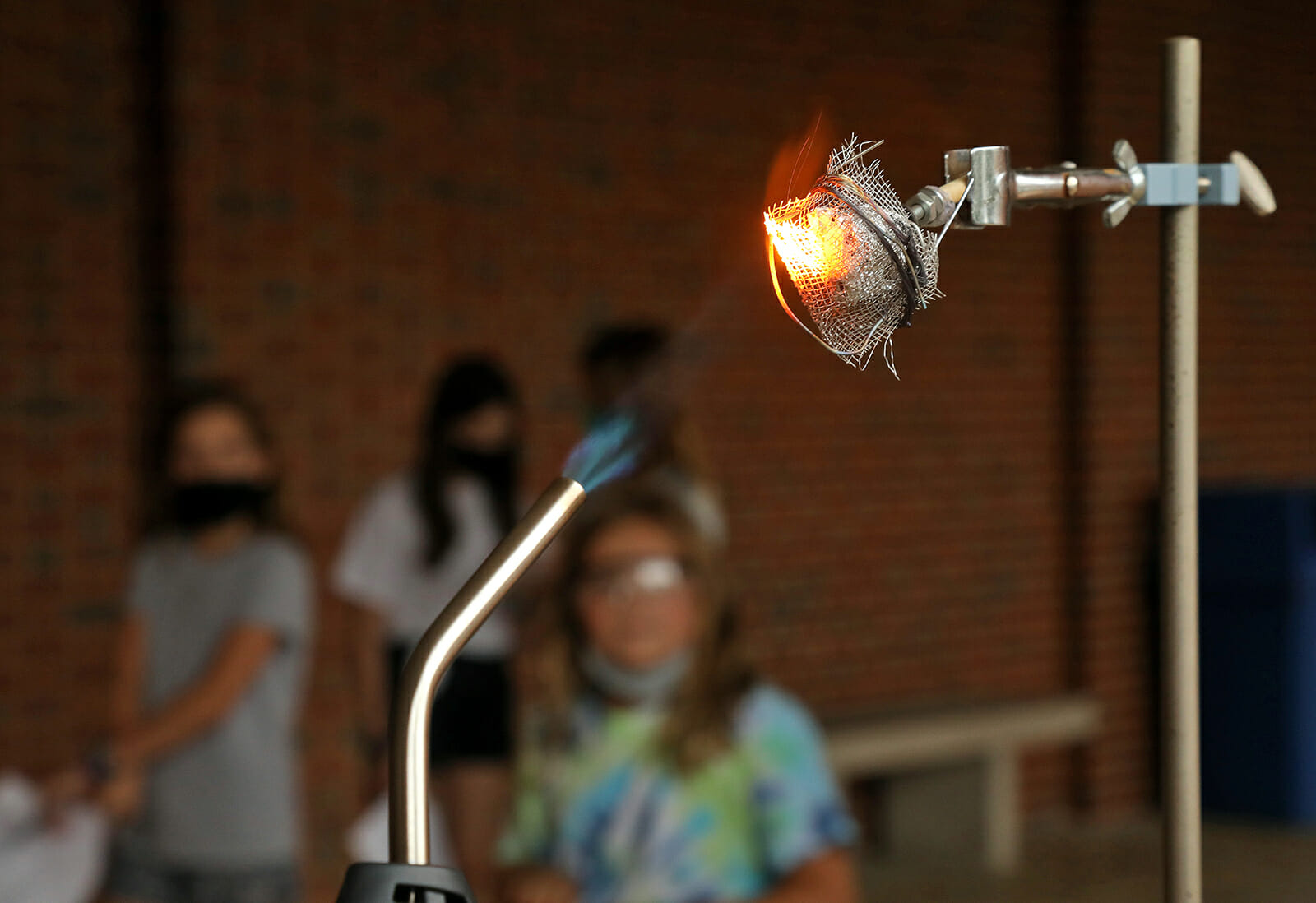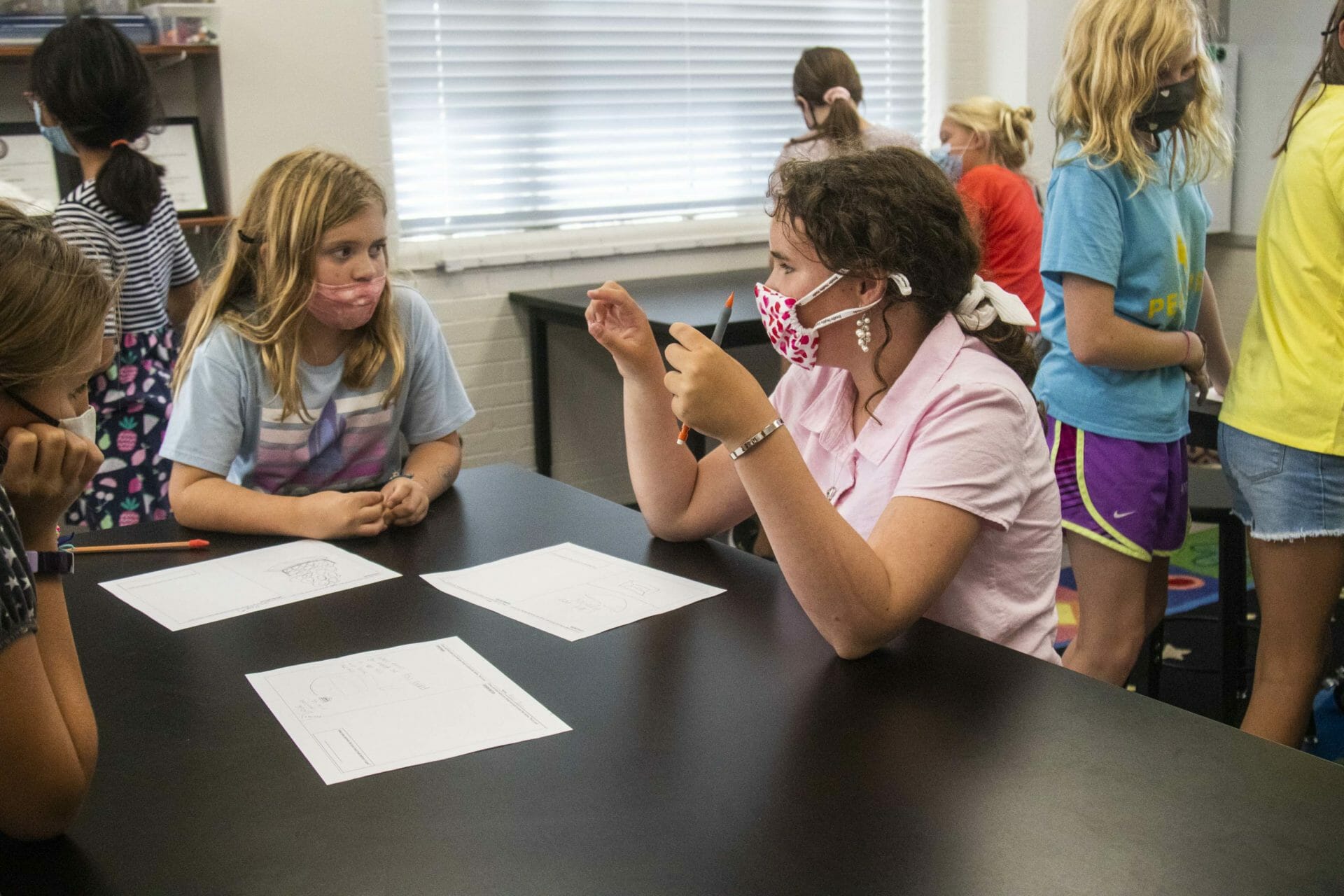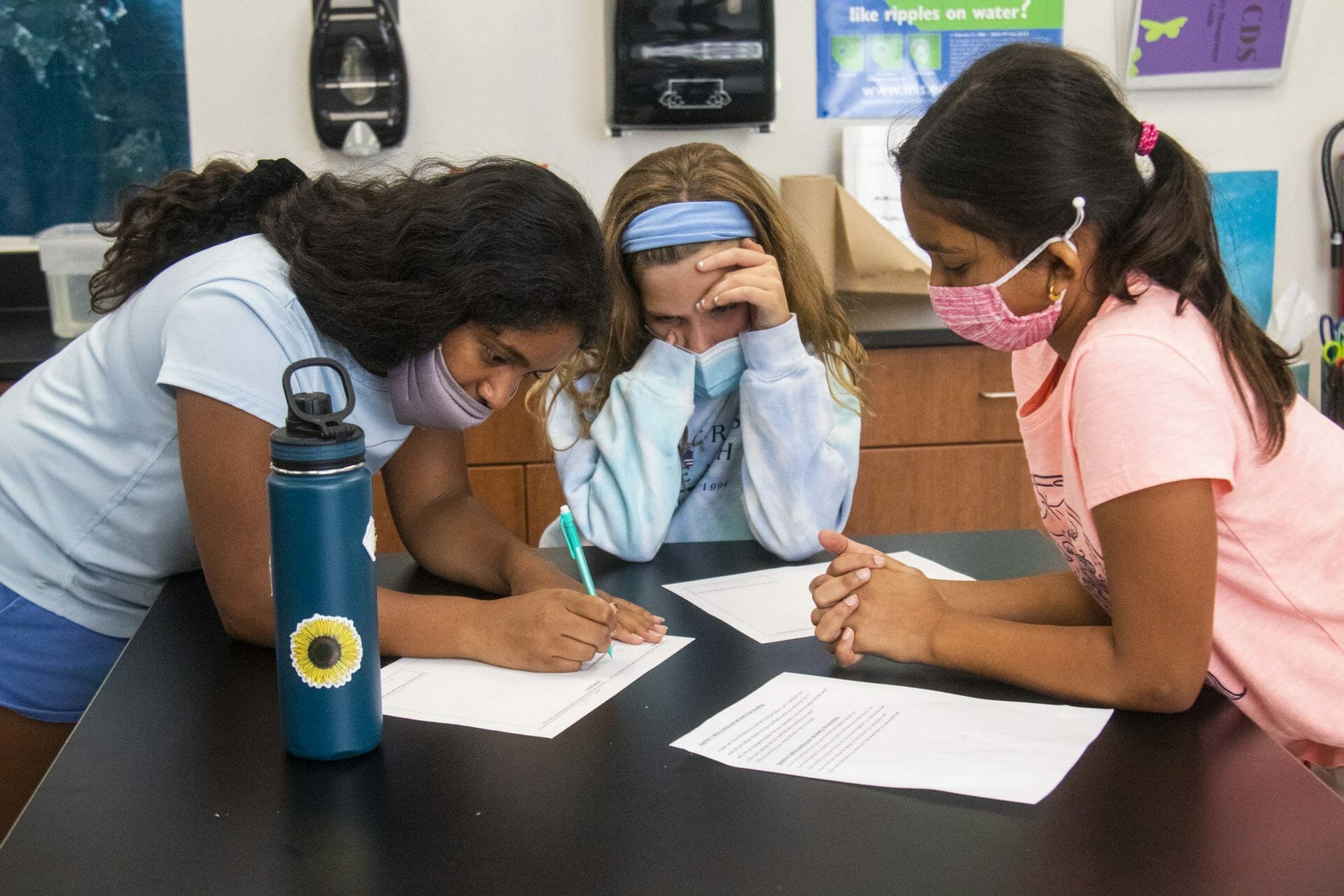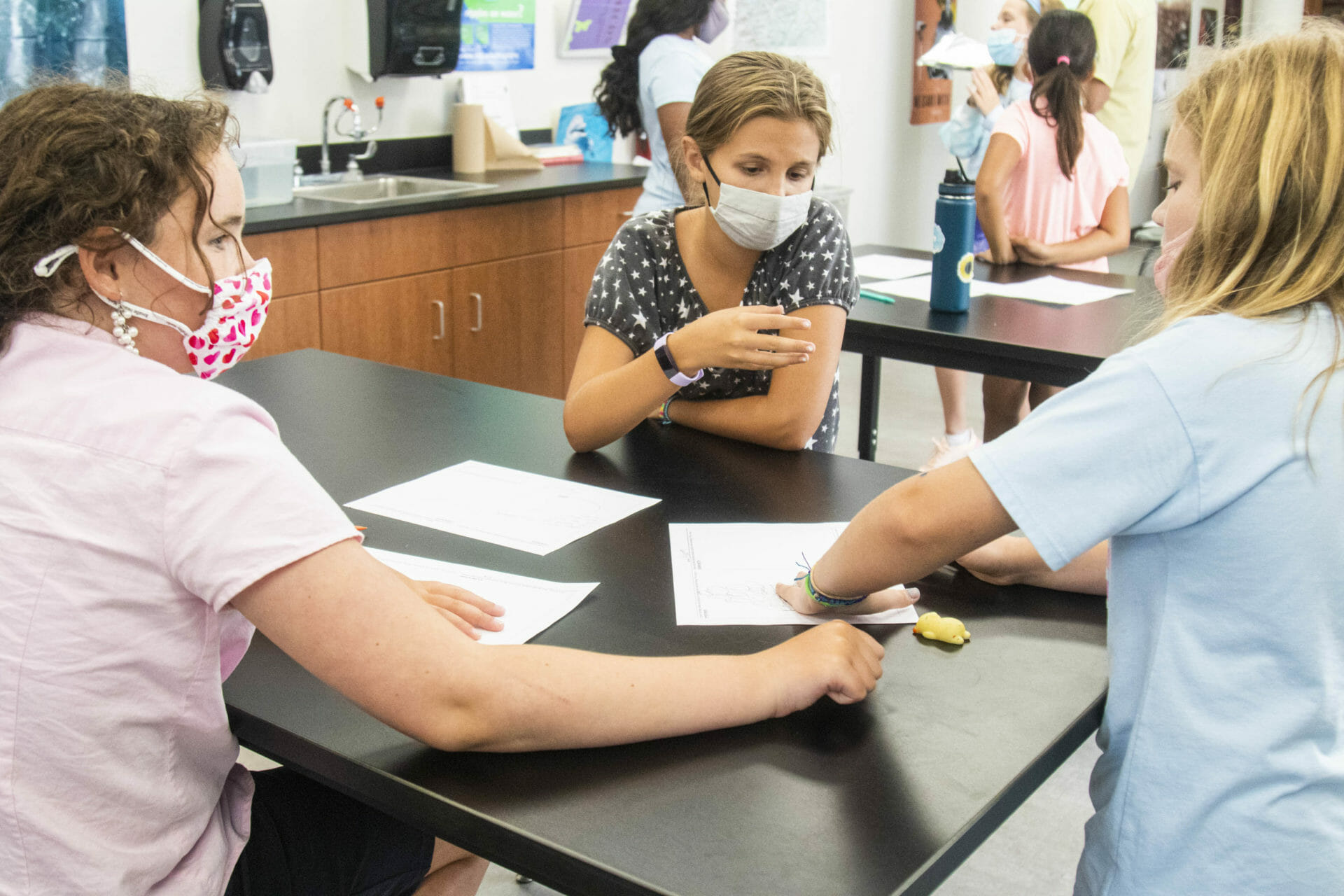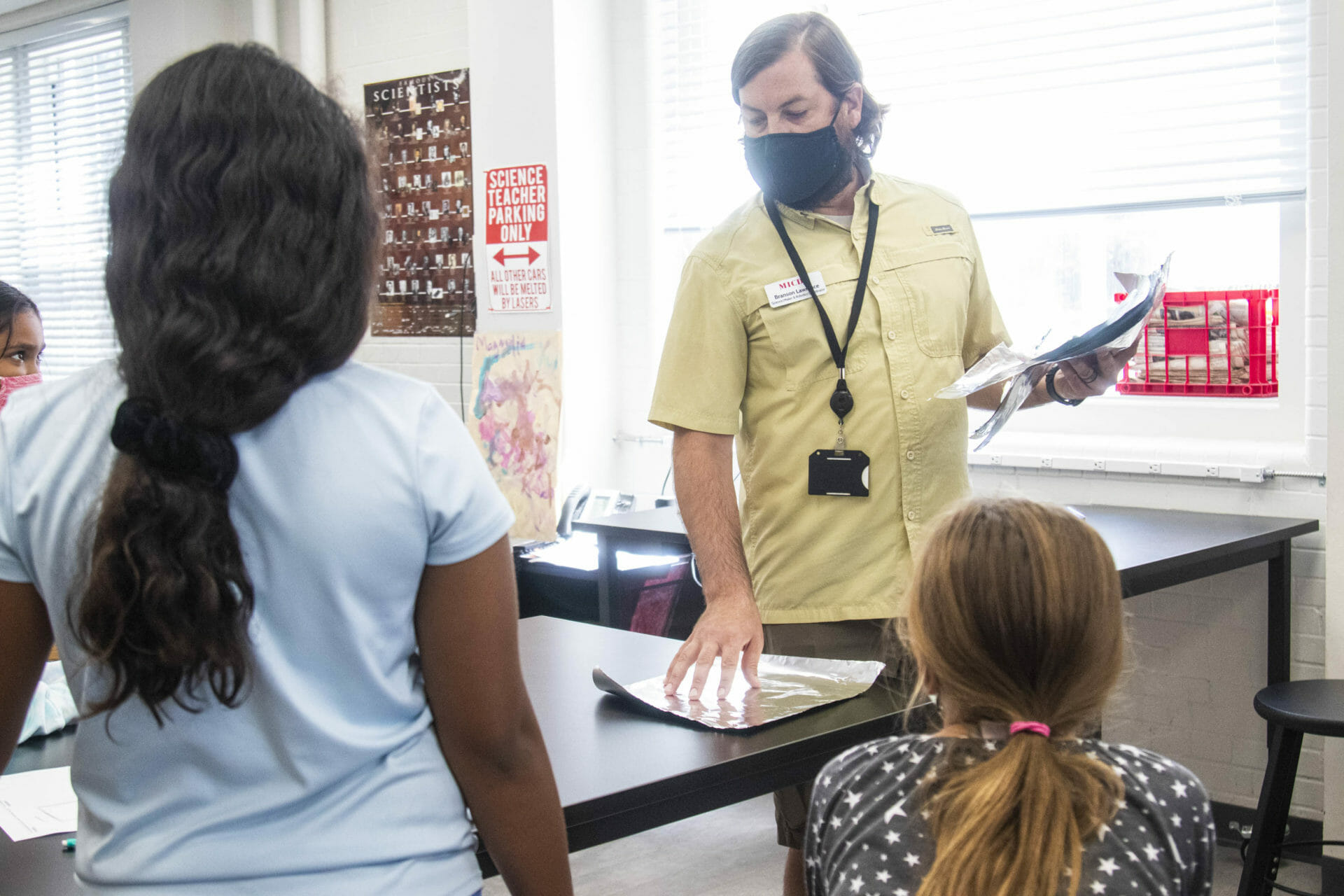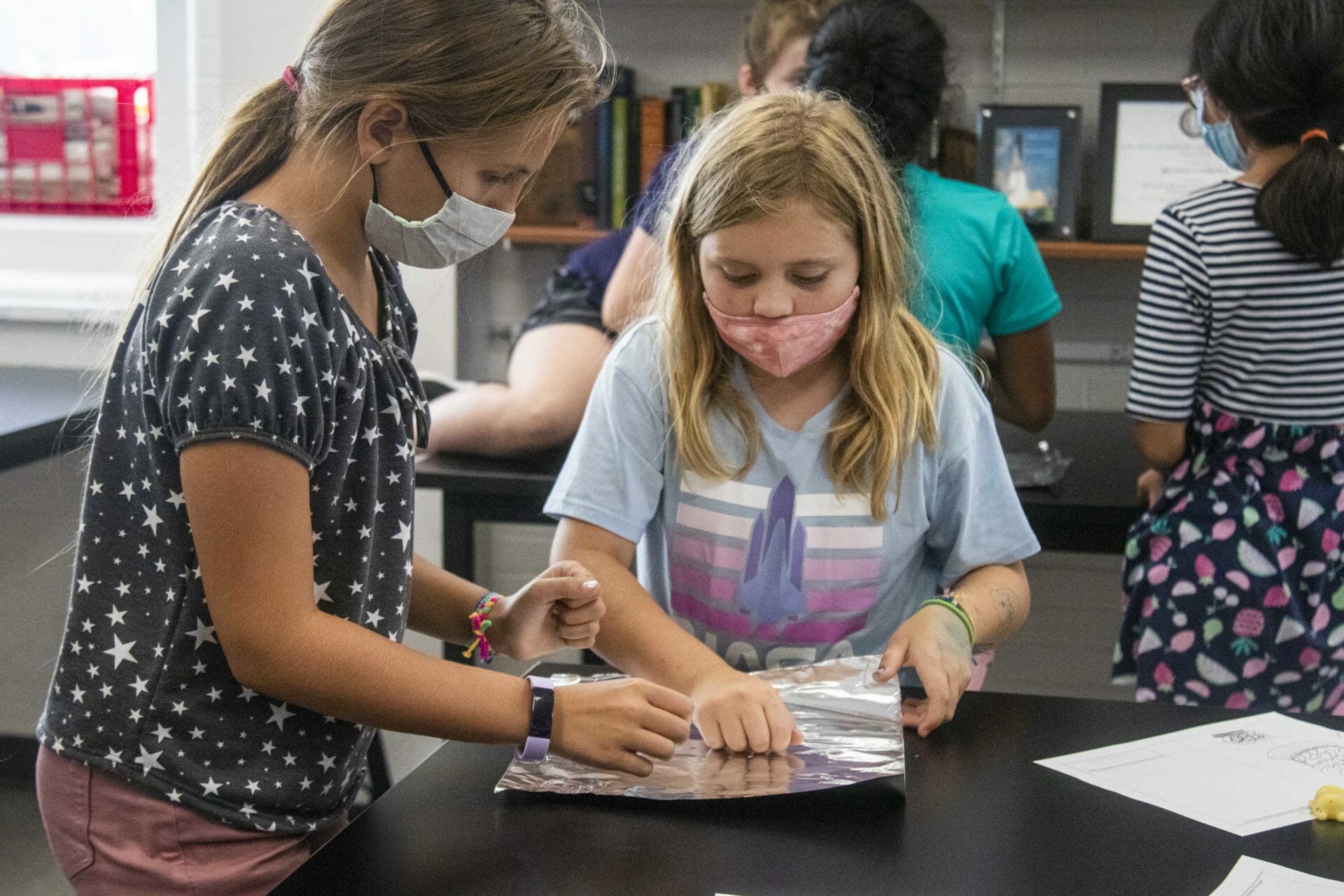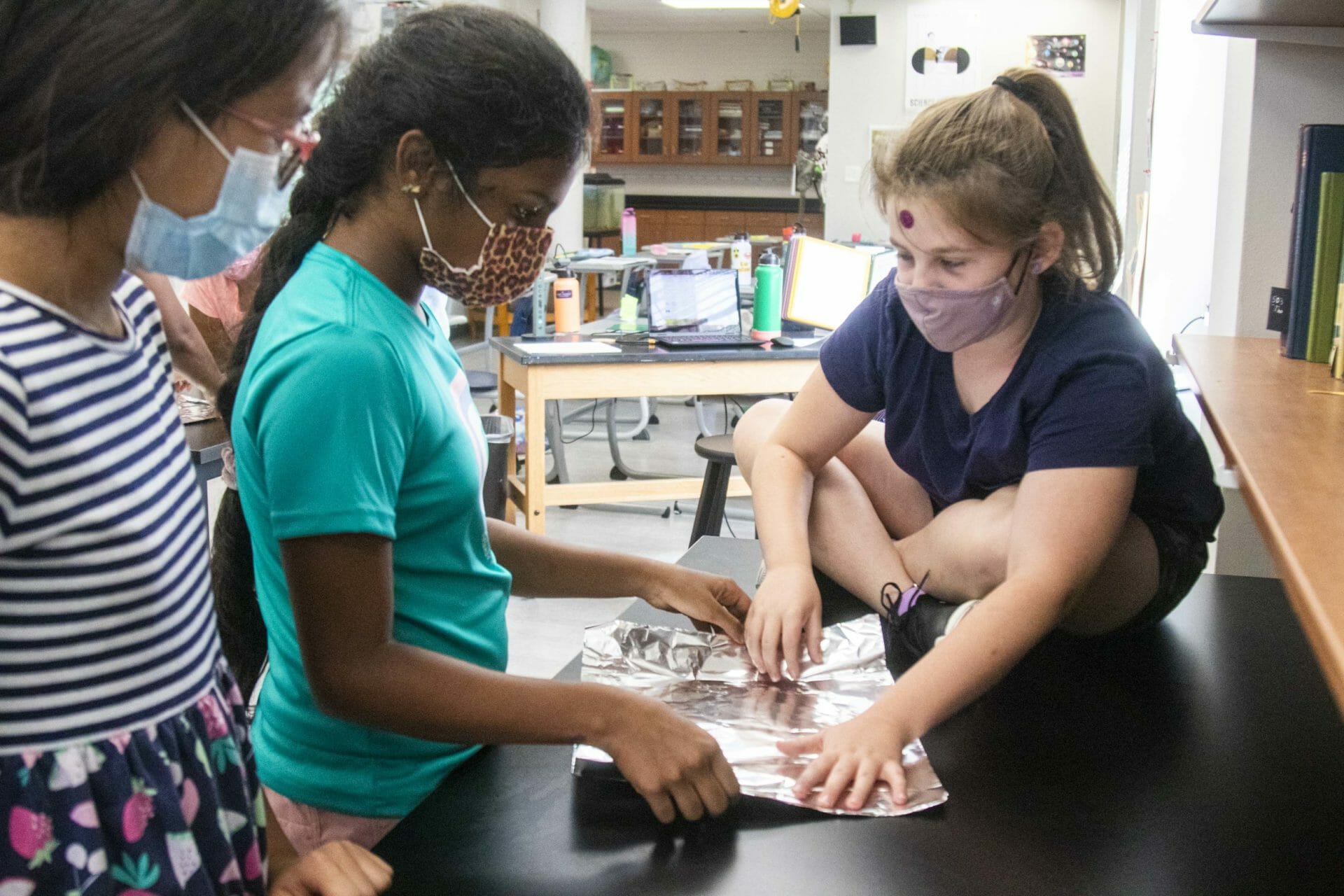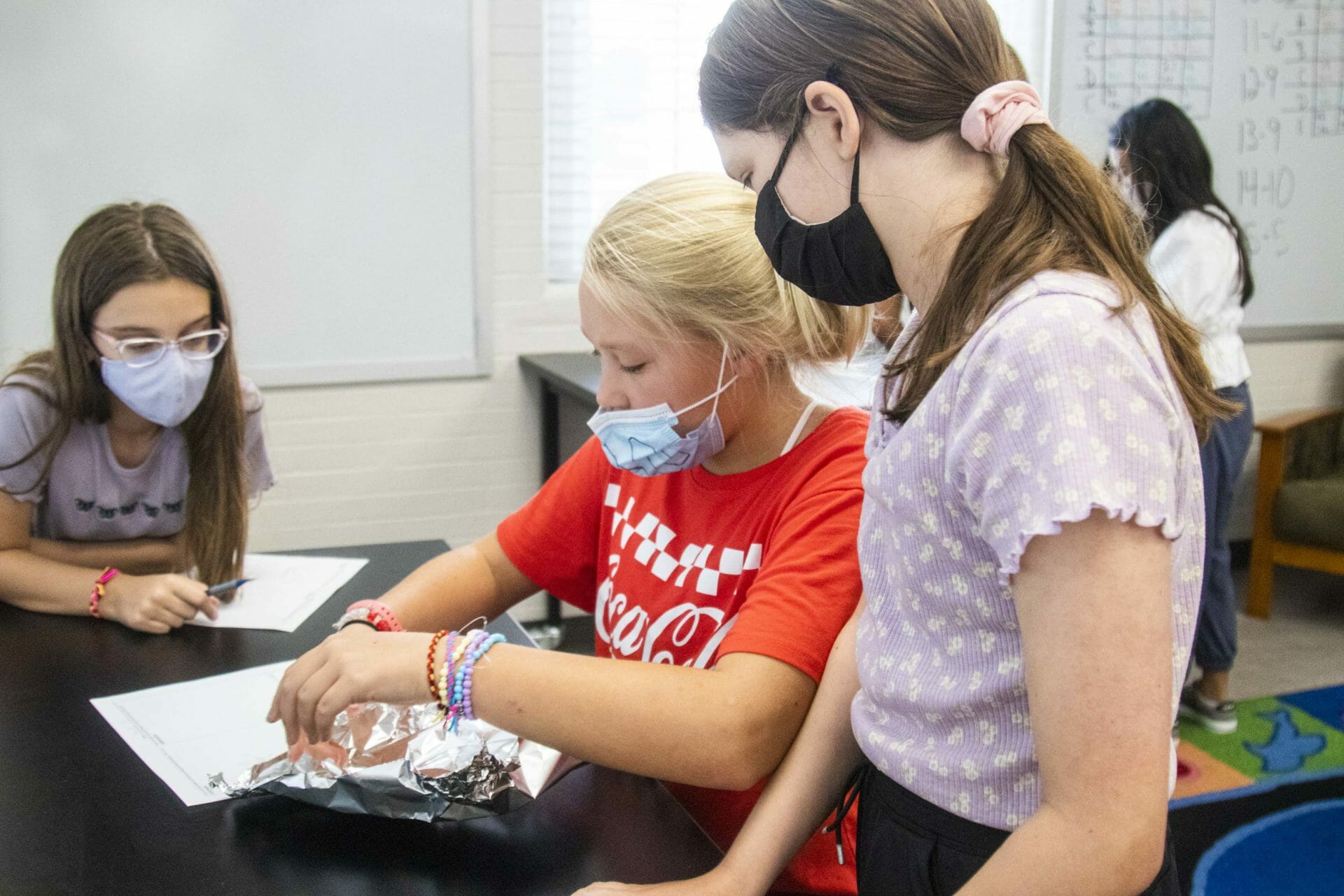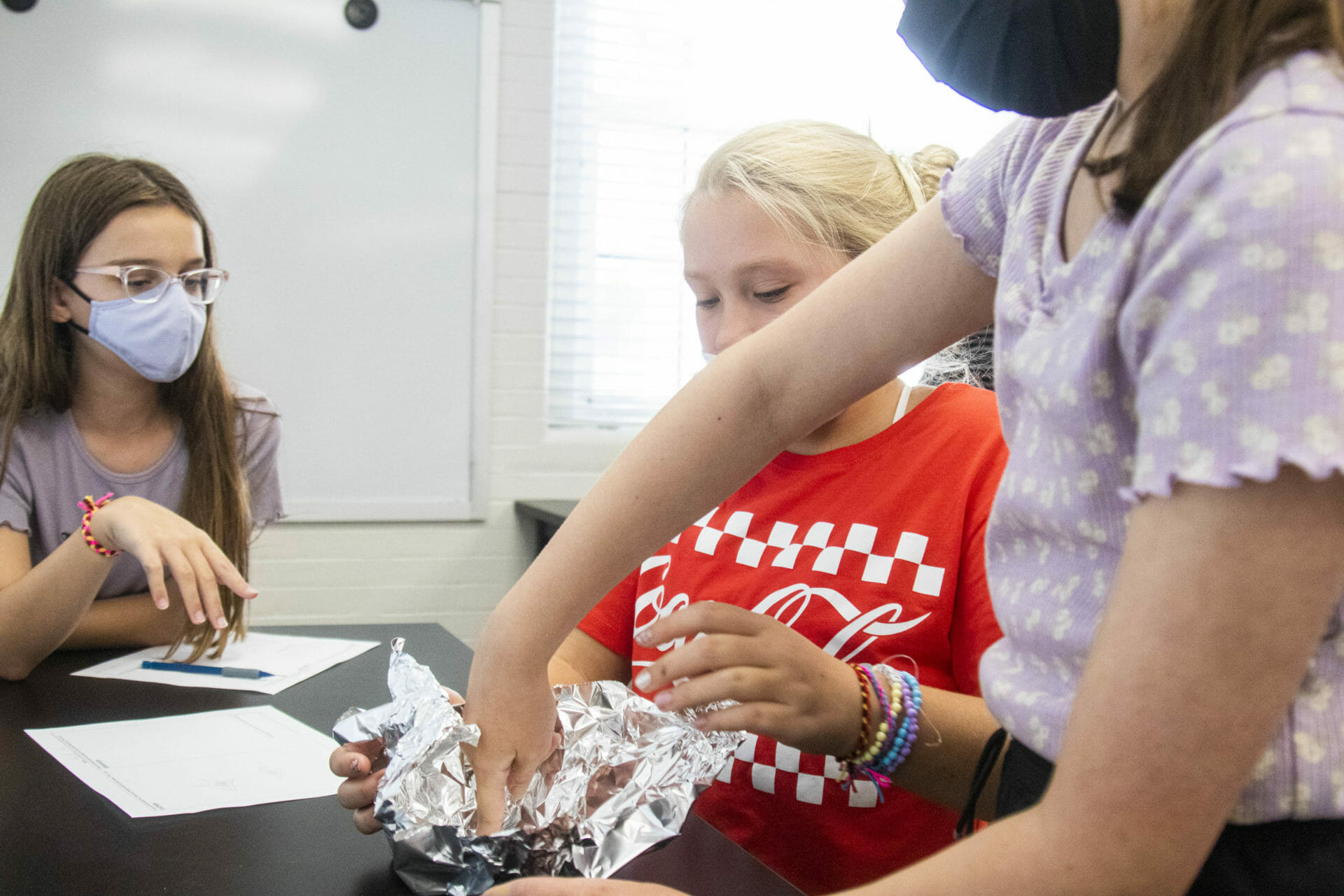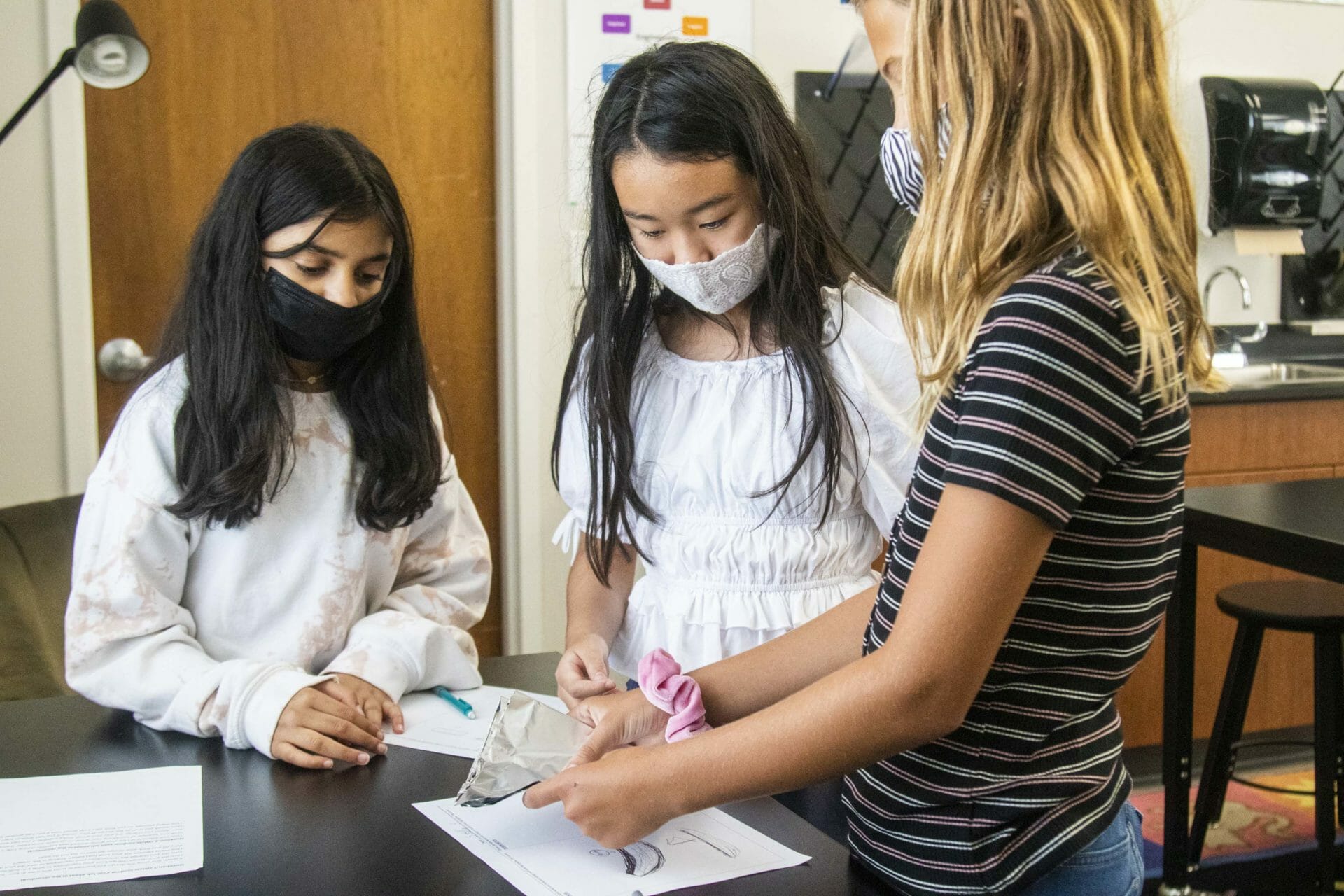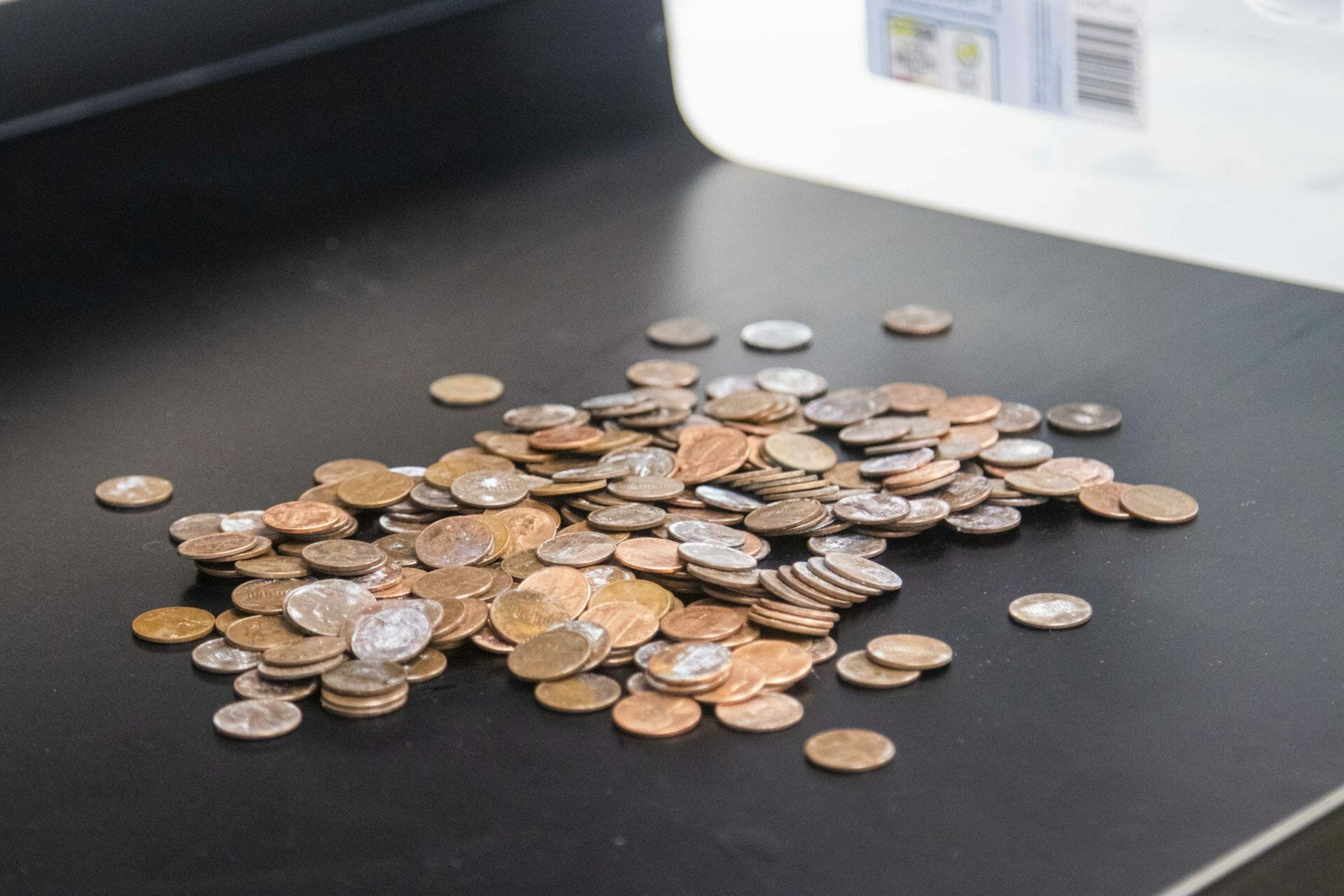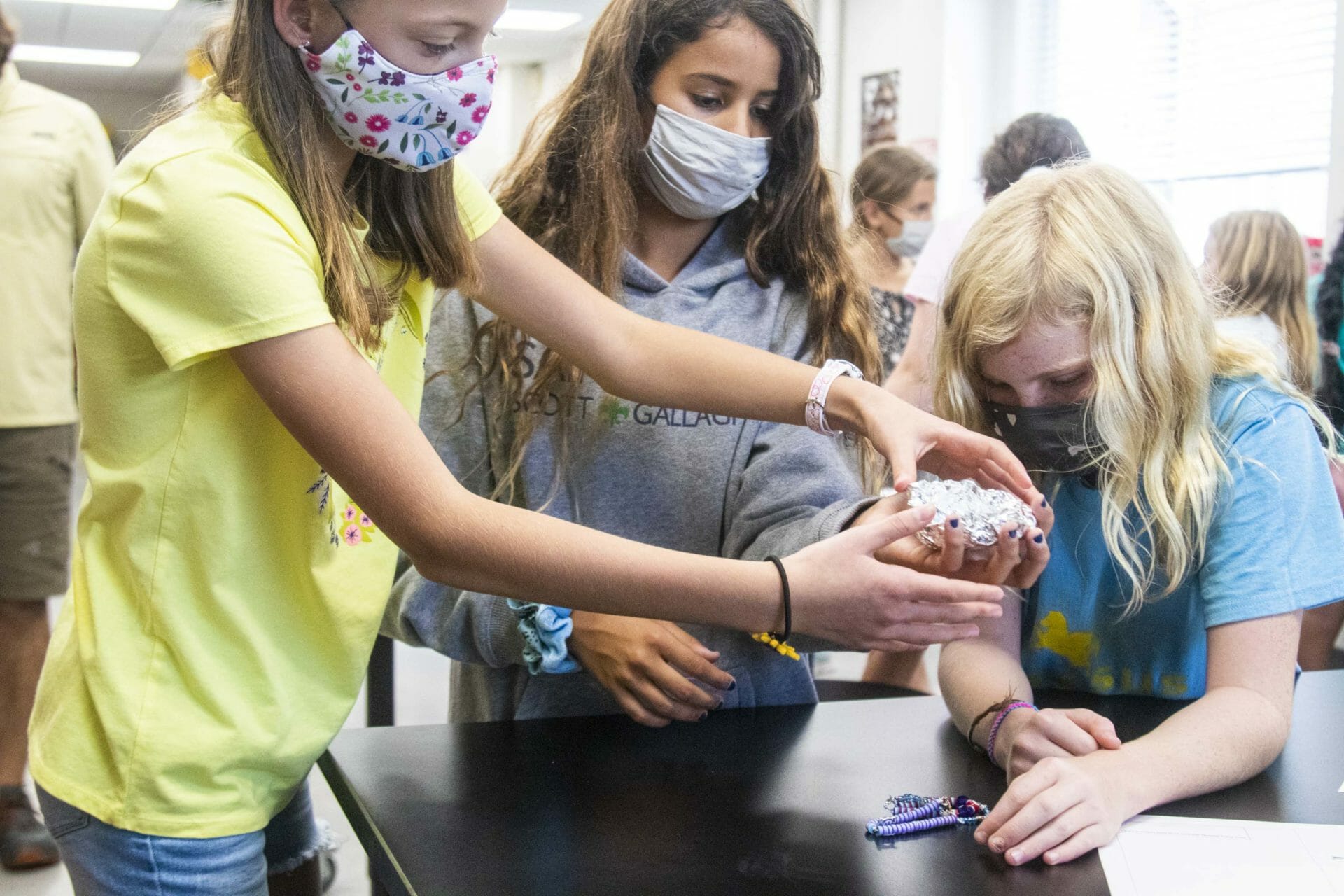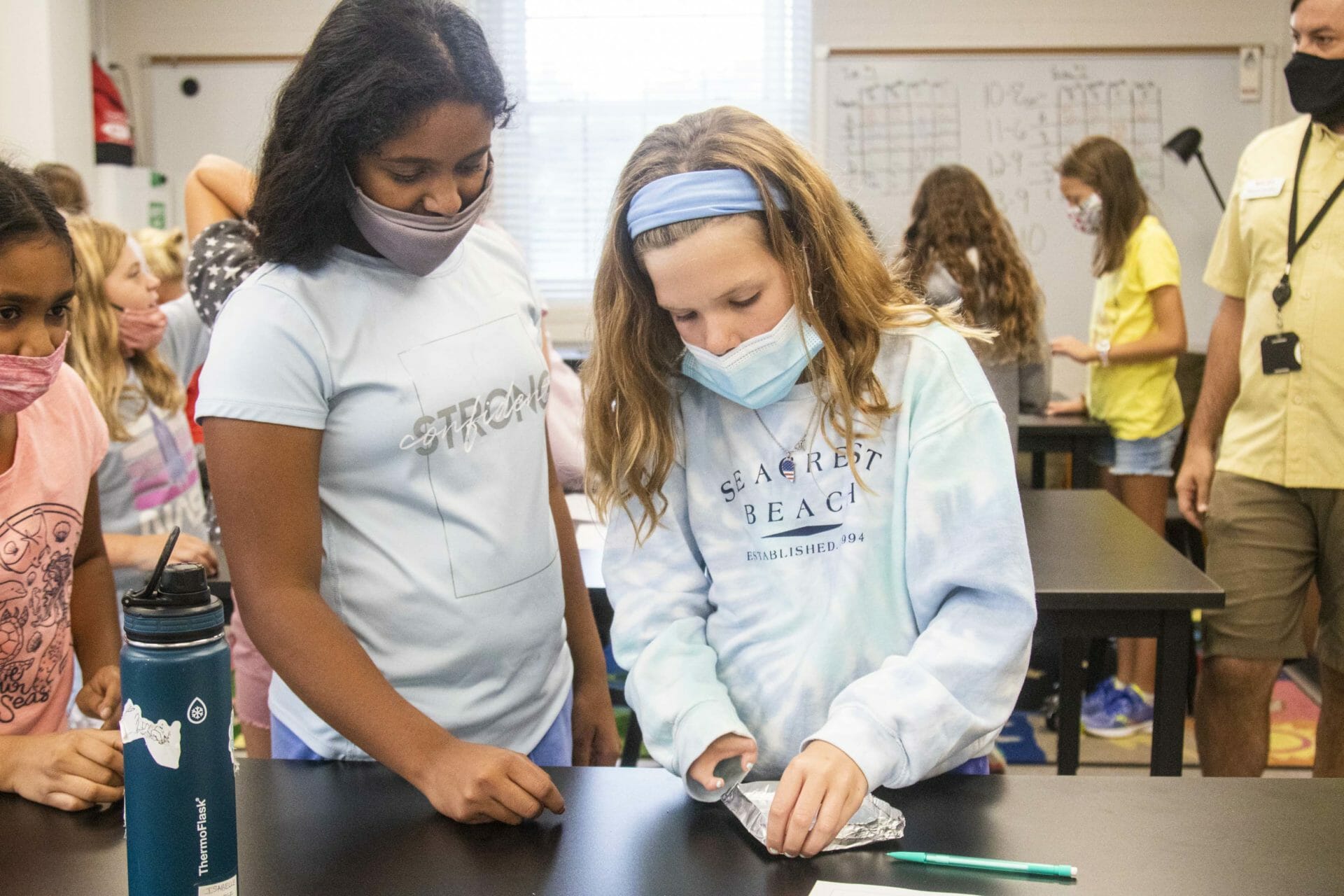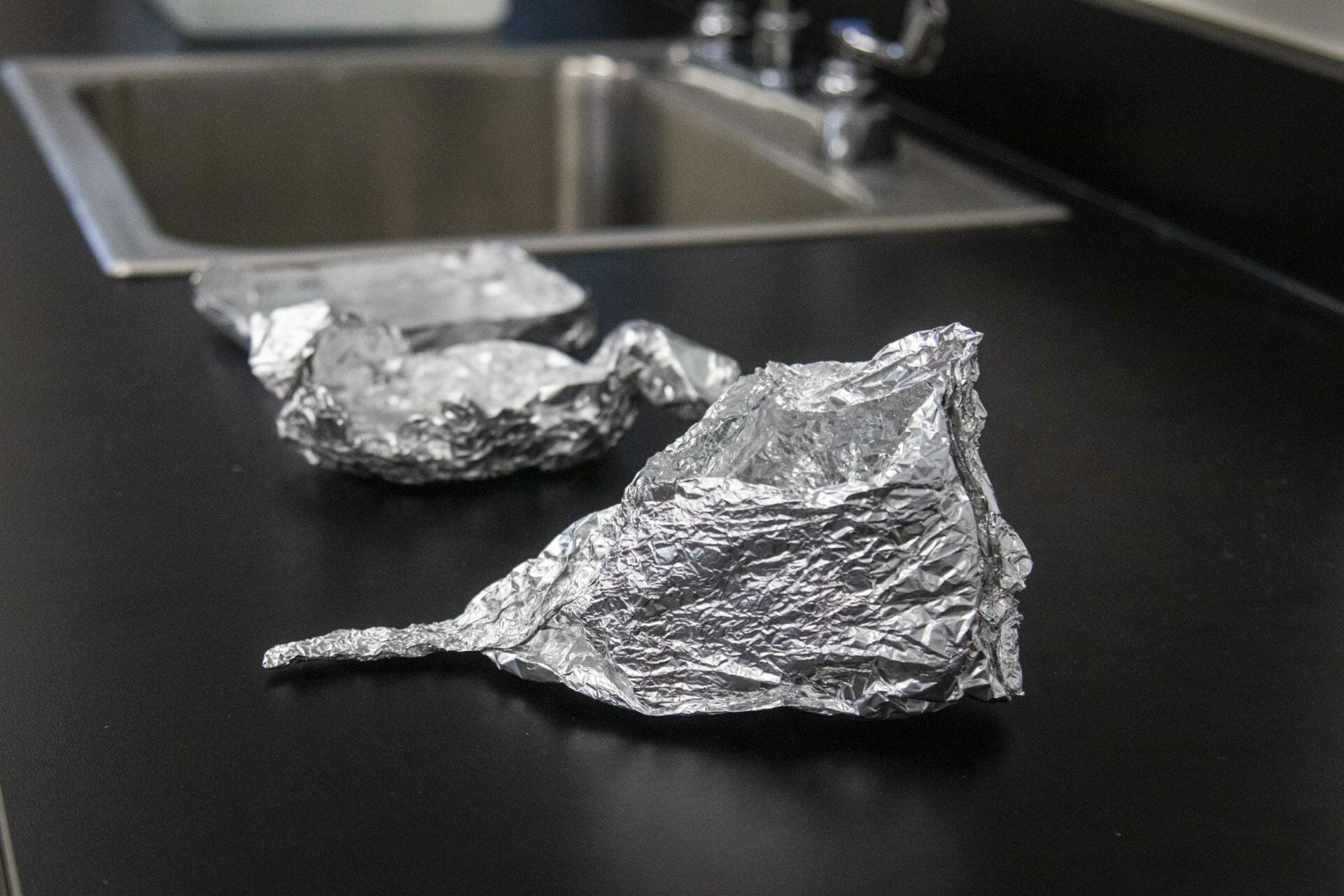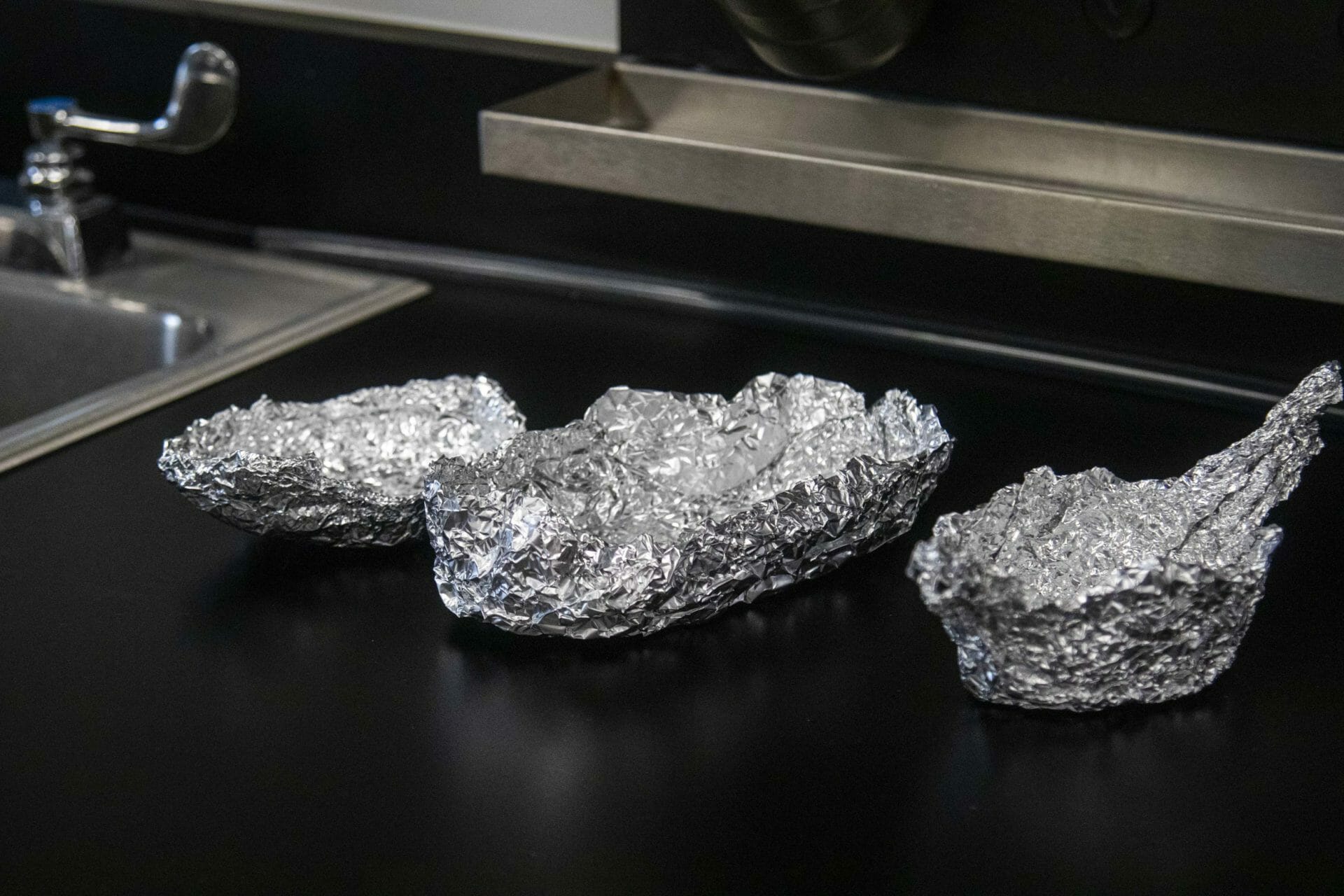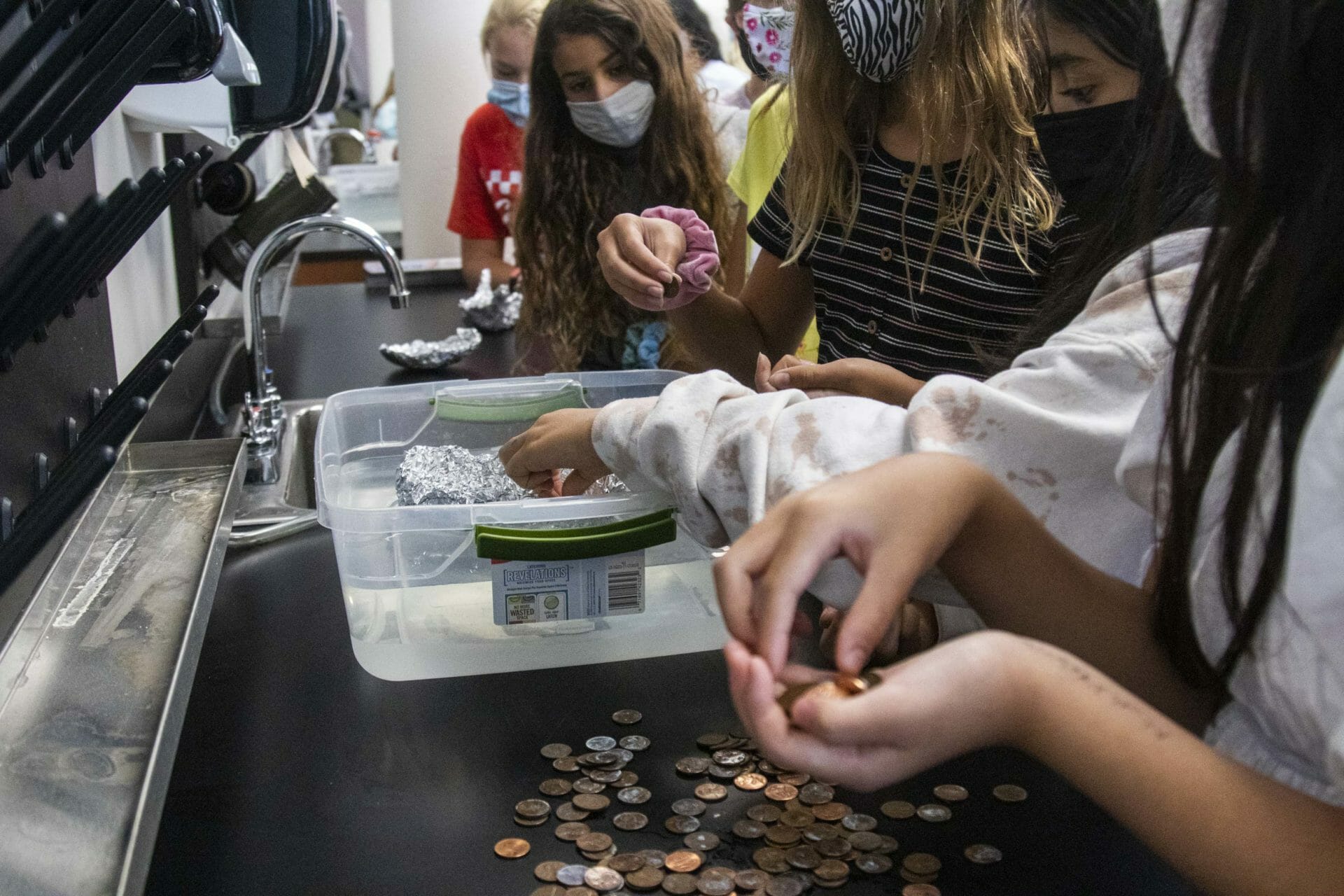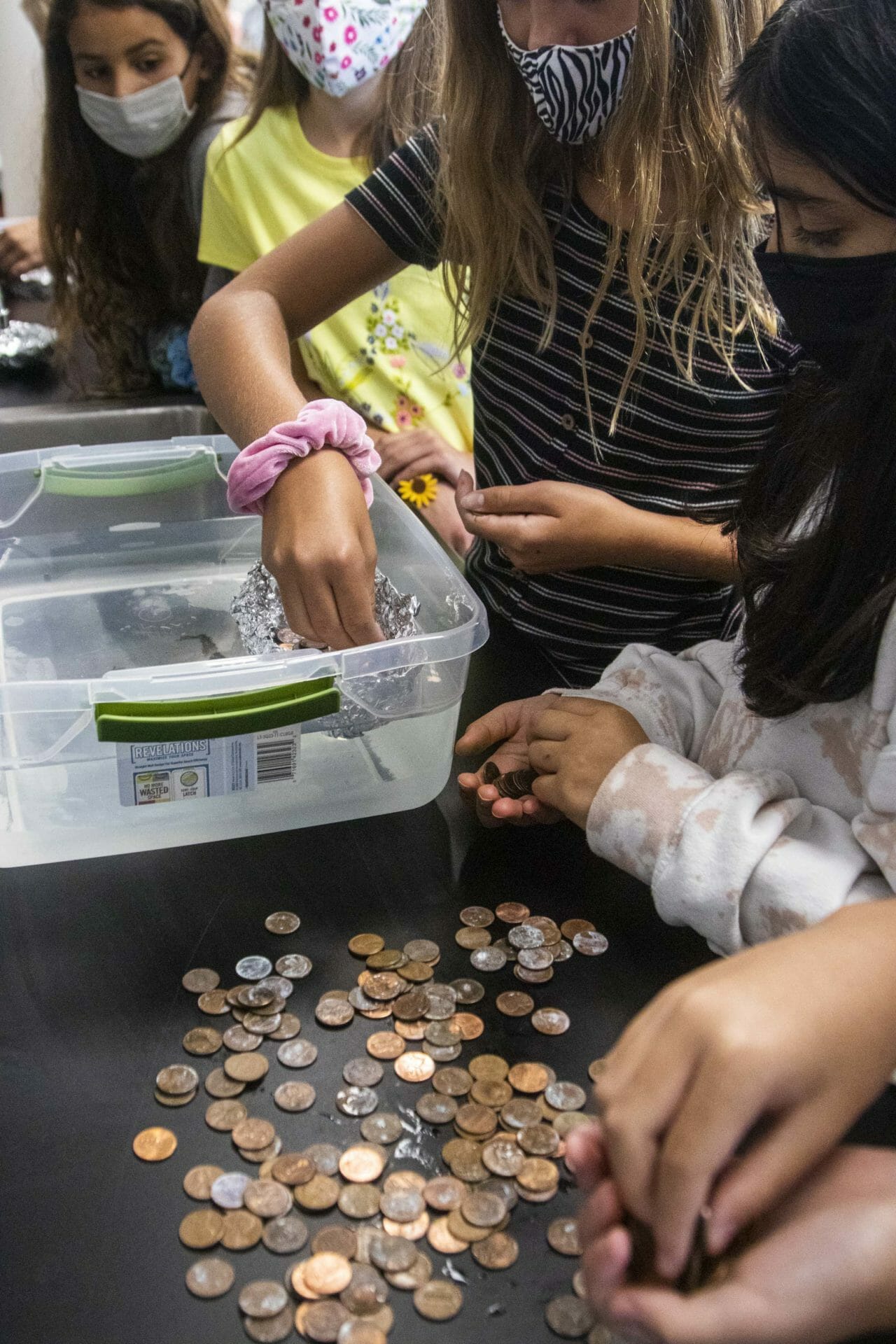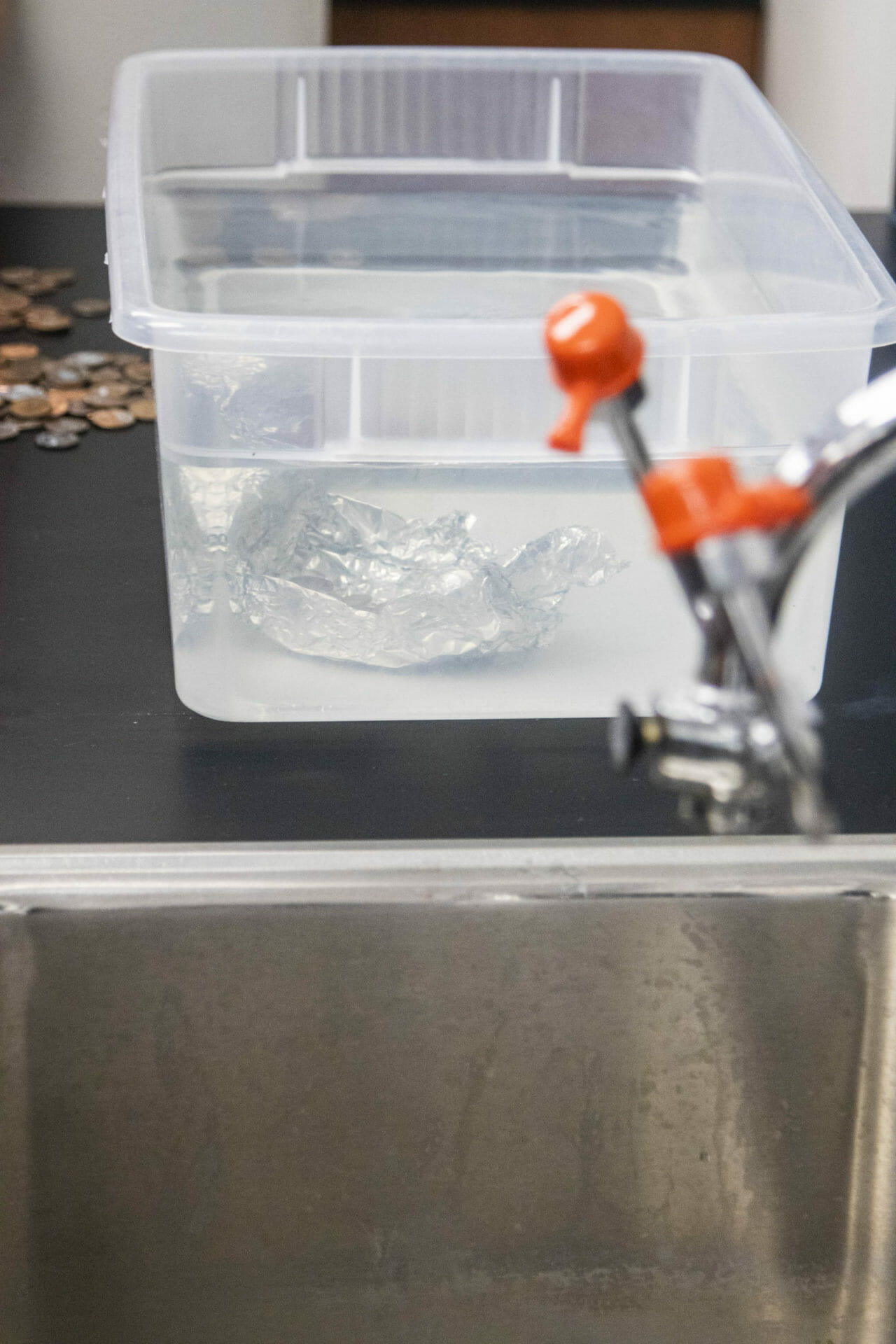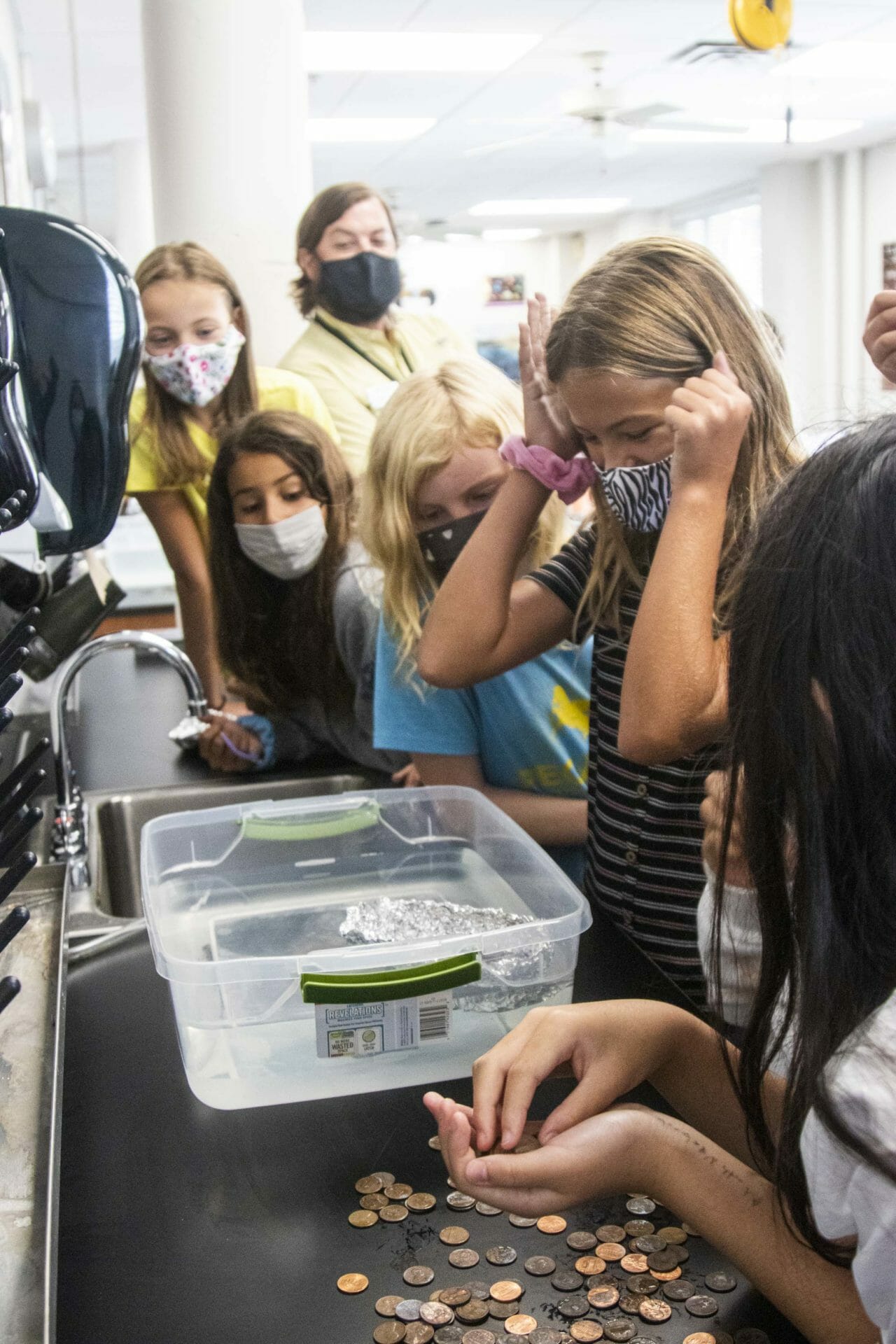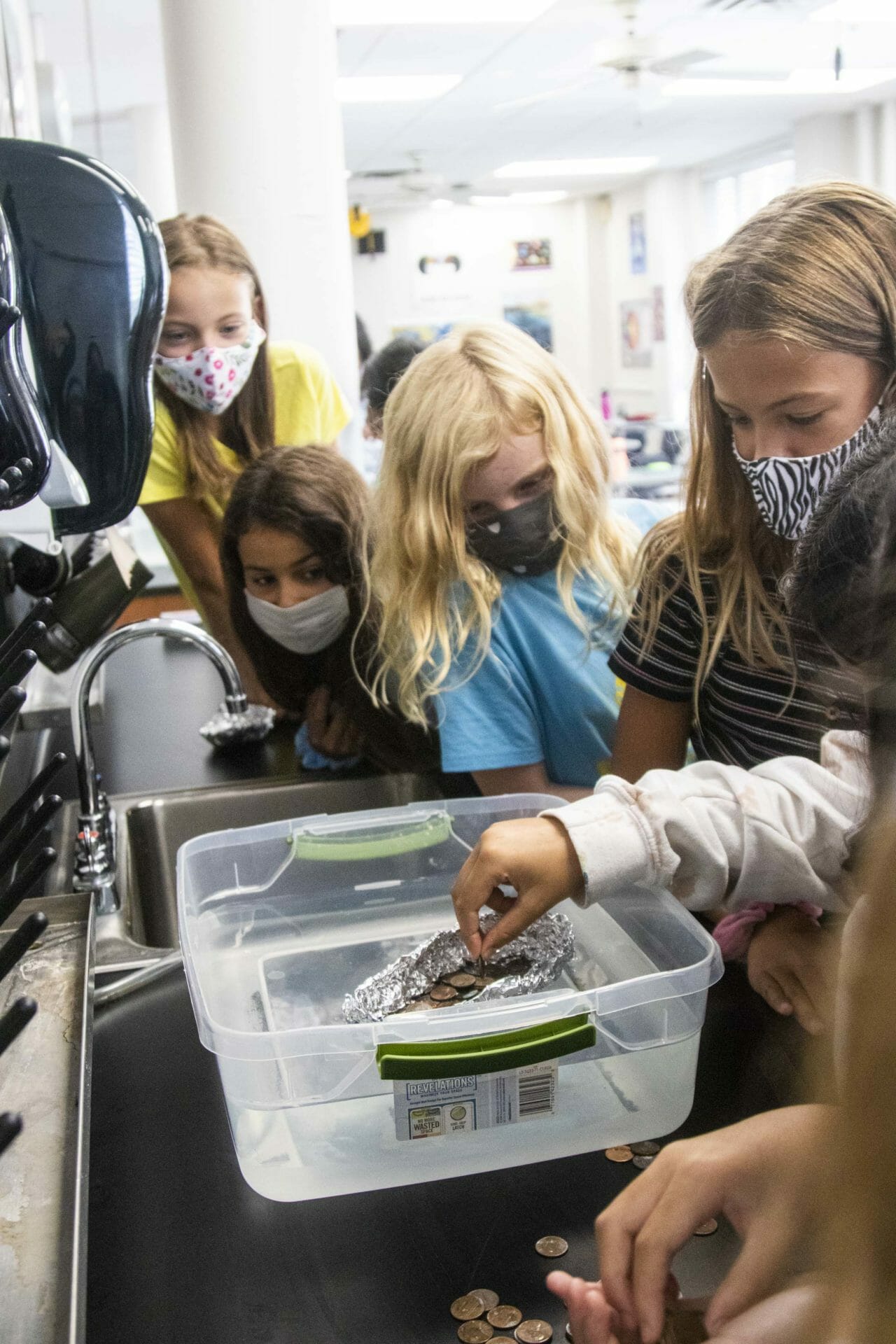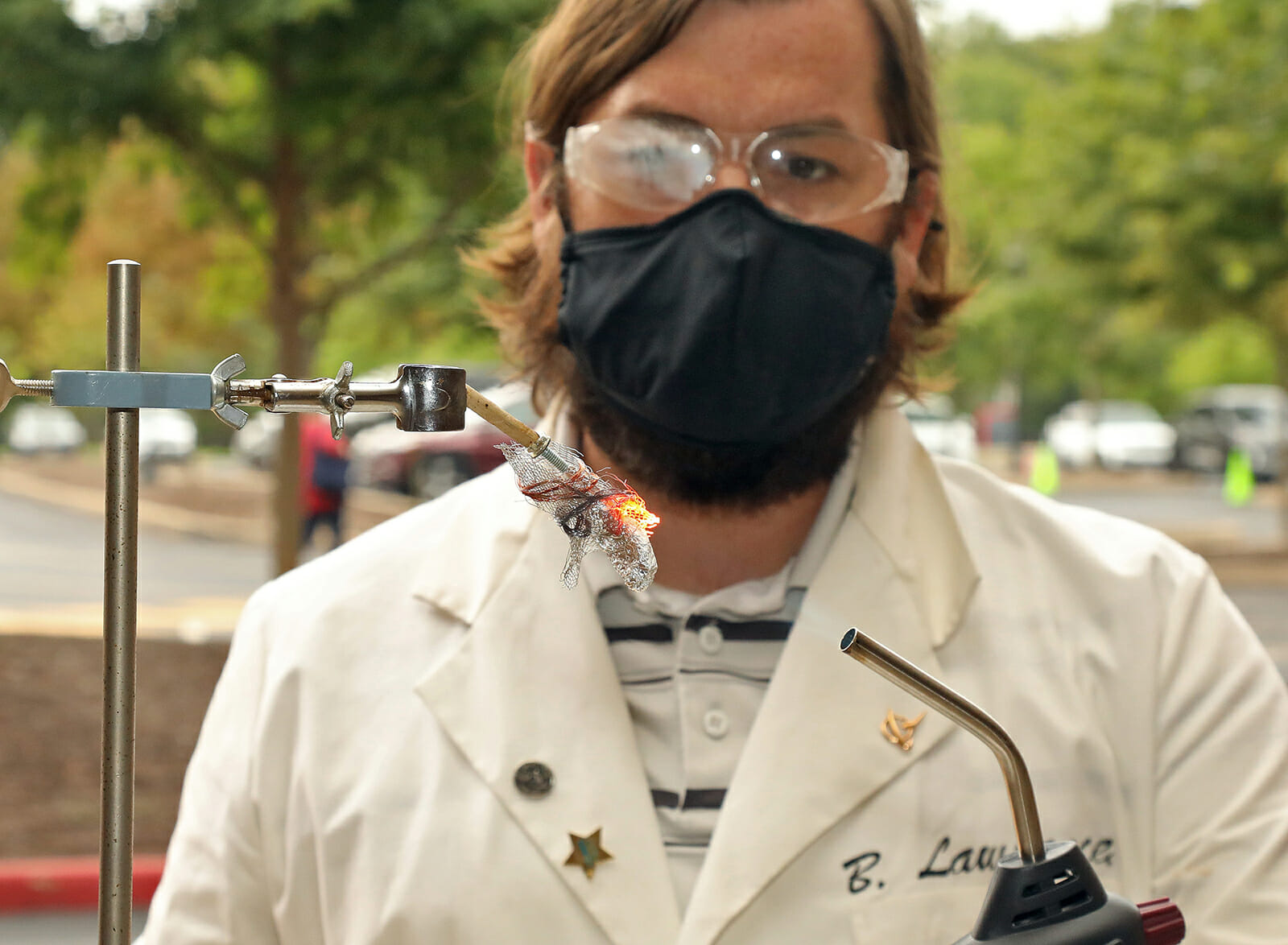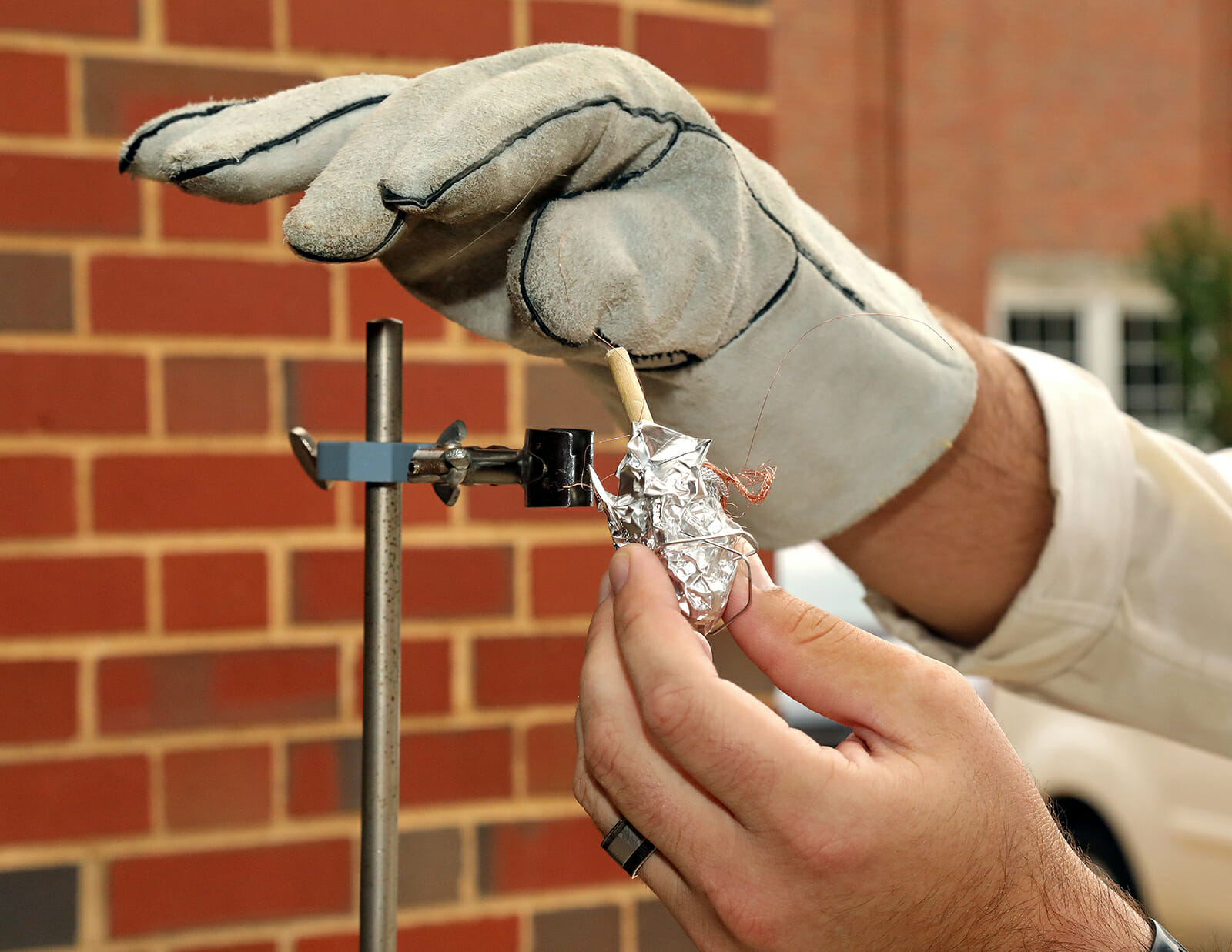Scientists at NASA and the Jet Propulsion Laboratory tackle the issue of heat transfer to ensure astronauts can safely return to earth after orbital and sub-orbital missions. Our 5th grade scientists are doing the same thing this year.
Branson Lawrence, Middle School Science Teacher, first created an activity to engage the brains of his students. He challenged them to think creatively and collaboratively to solve a problem: float as many pennies as possible with just a piece of aluminum foil. The students worked together to brainstorm ideas before creating boats with the foil. Then they tested their boats in bins of water, dropping in one penny at a time to measure how many each boat could hold before sinking.
“This activity was designed to help prepare them for the heat shield activity and other engineering challenges we will experience in 5th grade this year,” said Lawrence. The heat shield activity is tied to the Earth Science unit and connects to the different ways that heat is transferred. He used glue to attach a bolt to a piece of wood, then surrounded it with various materials to create a heat shield.
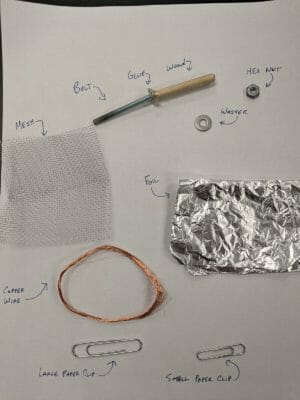
“We discussed how the heat transfer of conduction happens from one end of the bolt to the other and melts the glue,” he explained. “We also discussed how the heat traveled to the space around the glue by the heat transfer of radiation.” Students used that knowledge and provided materials to construct their own heat shields, attempting to keep the glue from melting and dropping the bolt.
Perhaps what the students learned in Lawrence’s class will help them design a heat shield on a space vehicle someday!
